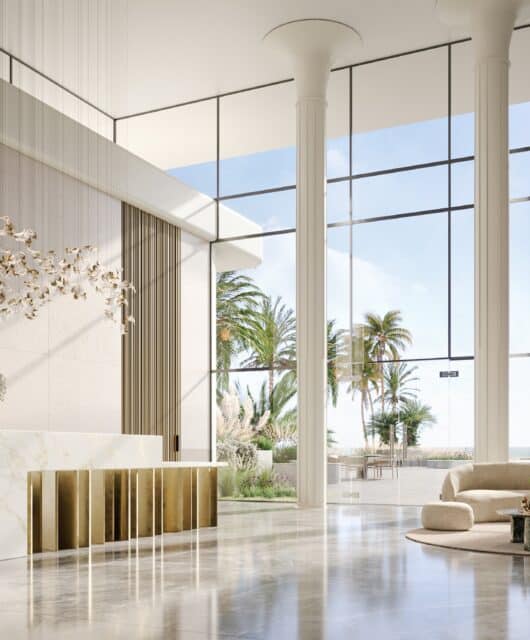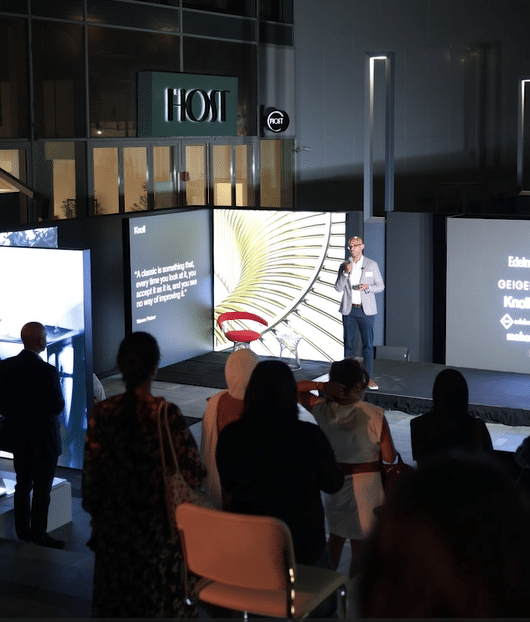Acoustics in design

Dima Alkawadri, Assistant Professor at Heriot-Watt University Dubai, outlines how to incorporate acoustic solutions into a design for enhanced environments.
Designers are increasingly recognising audio as an essential element to enhance the multi-sensory experience in spaces. Multi-sensory spaces engage and stimulate users more effectively, promoting creativity and creating a sense of satisfaction. The purpose of adding a sound effect varies across different projects. It ranges from intentionally utilising sound to pave the path and guide the flow of visitors, using furniture or surfaces as sound reflectors, creating immersive music experiences, or establishing quiet environments for focussed work.
In interior design, introducing different design elements to manipulate sound plays a key role in leaving a lasting impression. For instance, adding water features or natural sounds in the right environment creates a sense of calmness and promotes creativity. Conversely, Sound can lead to a spike in stress levels in a tense environment. Designing buildings usually has to adhere to audial codes and ensure compliance with specific acoustic properties to enhance the sound quality for various functions.
As a result, multiple design strategies are usually employed to improve noise reduction. For instance, the use of audial decorative panels, whether suspended from the ceiling or mounted on walls, can absorb or diffuse sound. Additionally, fabric audial panels, covered in fabric, help absorb sound in indoor environments, especially in areas where clear speech is crucial. They come in various colours and fabric textures to suit different preferences. These panels are now designed in various shapes, both geometric and organic, and have a wide range of colours and patterns to choose from. Moreover, there are printed acoustic panels with customisable designs for greater personalization.
An additional function to these panels can also be added such as arranging these panels to provide privacy. Another technique is to vary the heights of ceilings in open areas, which not only reduces noise but also creates a more comfortable atmosphere. Sometimes soundproof materials can be simply backed to other materials like flooring and wall coverings, to absorb, reduce, or block sound.
The growing understanding of acoustics and the accessibility of finely crafted acoustic furniture have started a significant trend in the market. This trend reflects a rise in awareness of the impact of sound environments on our daily lives, from office spaces to home interiors to interactive spaces and exhibitions. While acoustic features were once seen as a luxury in office settings, they are now viewed as essential for creating a productive workspace.
Acoustic lights also offer a practical solution for addressing sound challenges. Offering both pleasant illumination and incorporating acoustic materials to effectively capture and reduce sound waves in a room. They are both cost-effective and imaginative, allowing for easy adaptation of any space to meet acoustic requirements. Also, they are perfect for maximising the use of limited or irregularly shaped areas.
Many acoustic lights are crafted with aesthetics and functionality in mind and are available in a variety of shapes, designs, and styles. These products, such as LEDs, OLEDs, smart lighting, etc enable greater control over lighting, enhance energy efficiency, and feature patterned surfaces that aim to elevate the visual and auditory ambience of any location. Some of the brands such as FLOS and Philips Lighting also provide customised lighting solutions for their customers.
When designing any space, designers must carefully consider acoustics as it significantly impacts functionality and ambience, shaping how individuals experience and interact within a space. Poor acoustics can lead to harsh noises, hindering communication, concentration, and overall comfort. Thoughtful acoustical design can create a conducive environment for various activities, whether it be focused work, relaxation, or social interaction.
Moreover, considering acoustics demonstrates a commitment to inclusivity, ensuring that spaces are accessible and comfortable for individuals with auditory sensitivities or hearing impairments. For instance, within public buildings, bustling work environments, and transportation hubs, the principles of inclusive design may include provisions for accessing designated quiet areas.
Integrating thoughtful acoustics into design not only enhances the functionality and comfort of spaces but also contributes to the overall quality of life for occupants, making it a crucial aspect of the design process.







